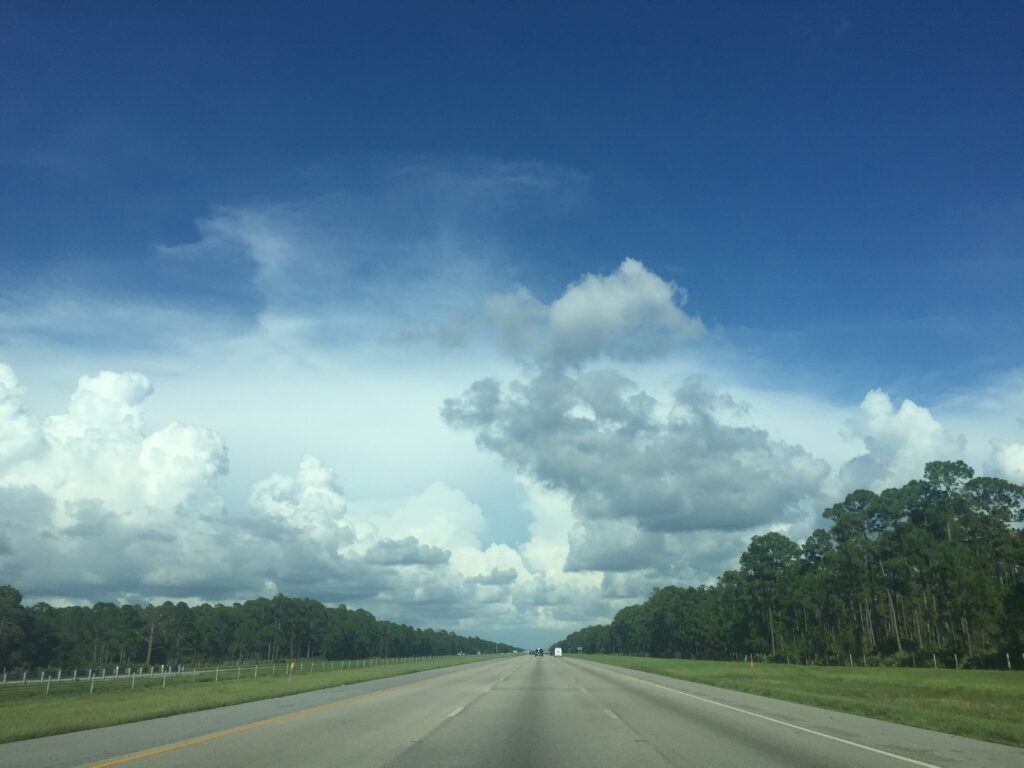My favorite tools to paint gorgeous skies and clouds, include large flat Taklon brushes, hog bristle filbert (a flat with the corners cut off), a small kitchen sponge, a sea sponge and depending on how big the canvas is, I might use a 6″ roller for Block-in, chip brushes and even a terry cloth towel. When I was doing Commercial Faux Finishing, we did a lot of sky ceilings in bedrooms, kitchens and lanais. I used whatever tool worked best for me to get the effect I wanted in the quickest amount of time.
Another tool that I find useful is a piece of chalk or a chalk pencil. I use this to sketch in my cloud shapes. Chalk is removed as it is painted over. It is important to create cloud formations that are connected. Little puffs (I sometimes refer to them as potatoes) all over a sky is not a good design element and looks very busy and amateurish.
Another thing to keep in mind when working on your design, is that some of your cloud shapes need to go “OFF” the canvas to give them the appearance of movement. This will help to create that gorgeous realistic sky and cloud effect.


